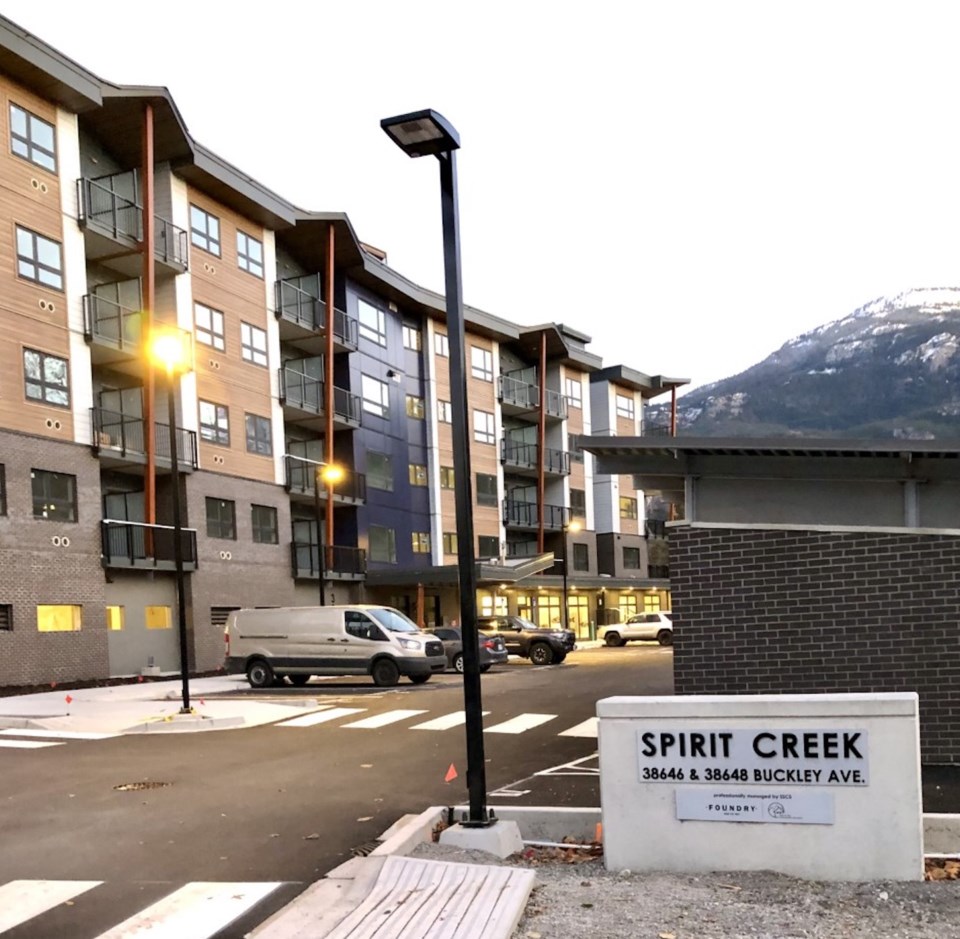A public hearing has been set for a bylaw that would remove restrictions for affordable housing projects in Squamish.
At a regular business meeting on Oct. 17, council members unanimously voted to approve the first and second reading of a bylaw amendment that removes density limitations on affordable housing projects and to schedule a public hearing on Nov. 7 on the matter. After the hearing, council may decide whether or not to move ahead with the third reading of the bylaw.
The intent of the change, said District planner Bryan Daly, is to “eliminate the rezoning process” that is often required for the projects and thus save time.
“This could save six months to a year in the development process and allow for affordable rental projects to be delivered to the market faster,” Daly explained. “The blanket rezoning for residential properties to allow for viable affordable housing projects will provide a significant advantage to non-profits and government agencies in delivering affordable housing in any Squamish neighbourhood.”
“This kind of blanket move to open up our zoning I think is a really powerful step towards finding solutions,” said Coun. Andrew Hamilton.
As you may recall, this bylaw was scheduled for an original public hearing on Oct. 3, but it was cancelled last minute in light of new information to consider.
As it turns out, the information was the original bylaw could have allowed higher residential density in hazardous areas, so the District added conditions to state that densities could not be higher than existing zoning in a debris flow hazard area, restricted densification area or limited densification area.
“I don’t think anybody wants to be putting affordable housing in high-risk areas, so that is critical,” said Coun. Jenna Stoner.
In her comments in favour of the first and second reading, Stoner admitted having a “few hesitations” on moving the amendment forward, mainly about moving it too quickly versus getting everything in the amendment square. However, she said she appreciated how the District went back and received more public engagement already.
“This is ready to go to public hearing,” she said. “And [I] look forward to hearing from the public on it.”
Previously, council asked for visuals of what could happen on an RS-1 zoned lot, or the zoning that typically accommodates single-unit dwellings, if this change were to go forward.
Daly shared that an RS-1 lot could likely have six parking stalls, allowing for a six-unit building. The Squamish Community Housing Society informed them, however, that affordable housing developments under six storeys do not typically receive financing since they do not have enough units to make a project viable.
Using the Spirit Creek apartments as an example, Daly said the building has 76 units and is five storeys in height over a lot that is about the size of eight RS-1 lots.
“Given the current market value of RS-1 zoned properties, it is unlikely that an affordable rental housing project would be acquiring multiple RS-1 lots and taking advantage of the relaxations proposed,” said Daly.
This removal of density limitations comes partly due to the critical housing needs identified in the District’s 2023 Housing Needs Report.
The report identified that approximately 6,840 housing units are required by 2031, of which 2,873 (or 42%) will need to be affordable to households earning $70,000 and below per year.
The District defines affordable housing as costing 30% or less to households that earn 80% or less of the median income in Squamish, a range from roughly $35,000 to $101,000. By this definition, monthly costs for 30% of income range from about $875 to $2,525 per month toward housing.
Bookmark squamishchief.com so you can return for more local stories like this.
Get Squamish news daily in our free newsletter. Sign up here.





